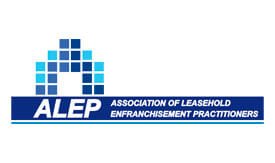Are 2 Properties Separated By a Lane a Single Hereditament
Case:
Harding and another v Secretary of State for Transport [2017] UKUT 135 (LC) (05 April 2017) (Bailii).
The Upper Tribunal (Lands Chamber) has considered whether two properties separated by a lane should be treated as a single hereditament for the purpose of a blight notice.
Background
Statutory blight
Under section 150 of the Town and Country Planning Act 1990 (TCPA 1990), the owner of land blighted by a public authority’s proposals (such as a transport scheme) may, if certain specified conditions are fulfilled, serve a “blight notice” requiring the authority to purchase his interest in the land.
High speed rail link HS2
HS2 is a new high speed rail link to be constructed between London and the North. Phase One will deliver the London to West Midlands line. Phase Two will deliver the line from Birmingham in a Y shape to Manchester and Leeds. HS2 will have major consequences for property owners and occupiers. Some properties may be permanently blighted by their proximity to HS2.
Mazars: single or separate hereditaments?
The concept of a “hereditament” for the purposes of statutory blight is the same as the general definition in rating legislation (section 171(1), TCPA 1990). Under the rating legislation, section 64 of the Local Government Finance Act 1988 defines hereditament by reference to section 115 of the General Rate Act 1967:
”… property which is or may become liable to a rate, being a unit of such property which is, or would fall to be, shown as a separate item in the valuation list.”
This definition introduced the concept that a hereditament is a unit of property. What constitutes a separate hereditament is a question of fact.
In Woolway (Valuation Officer) v Mazars LLP [2015] UKSC 53, the Supreme Court held that non-contiguous floors occupied in the same building by the same business should be treated as two separate hereditaments for non-domestic rating purposes. The Supreme Court set out the broad principles to be applied when assessing whether distinct spaces under common occupation form a single hereditament for non-domestic rating purposes. The principles can be summarised as:
• The geographical test. This is based on “visual or cartographic unity” or direct communication between the properties. If adjoining properties can only be accessed through other property (such as going onto a public street or into the common parts of a building) this will strongly indicate that they are separate hereditaments.
• The functional test. This is based on necessary interdependence between the properties. There may still be a single hereditament if the use of one space is necessary to the effectual enjoyment of the other. Could the two spaces reasonably be let separately? Lord Neuberger referred to the example of a golf course divided by a public road (Burn Stewart Distillers plc v Assessors for Lanarkshire Valuation Joint Board [2001] RA 110).
• The objective necessity test. The question of whether the use of one section is necessary to the effectual enjoyment of the other depends on the objectively ascertainable character of the properties, not the business needs of the occupier. This will call for a factual judgement by a valuer, involving professional common sense.
Facts
In 2002, Mr Harding and Miss Clements (owners) bought land to the south-west of Yarlet Lane (first land). They converted an existing barn into a dwelling (house) and built a bespoke tack room, stables, feed store and hay barn (plot 1 stable block). They kept one pony on the first land.
In 2006, the owners rented an adjoining paddock, to provide grazing land for the pony and a second horse. In 2007, they bought one half of the adjoining paddock (paddock land). The first land and the paddock land formed plot 1.
The owners wanted to buy a third horse for carriage driving. However, plot 1 could not provide year-round grazing for three horses and was not suitable for carriage and dressage training.
The owners therefore bought land to the north-east of Yarlet Lane (plot 2) in 2012, which enabled them to keep three horses in total. Plot 2 provided haylage, additional grazing and land for training. The owners built a three bay barn on plot 1 (new barn). This allowed the plot 1 stable block to be used for stabling the three horses and storing carriages.
In 2013, having obtained a licence from the highway authority, the owners constructed a culvert between plot 1 and plot 2, passing beneath Yarlet Lane. The culvert contained a water pipe (water pipe) which supplied main water from plot 1 to a water trough on plot 2.
Plot 1 comprised 0.838 hectares and included:
• The house.
• The plot 1 stable block, used for stabling and equipment storage.
• The new barn, used for storing the hay crop from plot 2 and the machinery used on both plots.
• Only 0.65 hectares of grazing land, of which 0.2 hectares was a former quarry area. The plot 1 grazing land was unsuitable for hay or forage production due to small field sizes and the former quarry area.
Plot 2 comprised 2.095 hectares and contained:
• No shelter for horses.
• A water trough connected to the water supply, under Yarlet Lane, from plot 1.
• A gateway positioned to be exactly opposite the access to plot 1.
• A pond, which the owners understood had been polluted (which led to them installing the water pipe).
The owners actively managed the land so plots 1 and 2 were self-sufficient as an equestrian unit. They argued that the uses of the plots were inextricably linked. For example, their three horses were stabled on plot 1, however plot 1 was not large enough to allow training or provide grazing all year for three horses. Plot 2 was therefore of fundamental importance for winter grazing and training, and also for growing hay. The hay crop grown on plot 2 was stored in the new barn on plot 1.
In March 2016, the owners served a blight notice on the Secretary of State for Transport (SofS) in respect of plot 1 and plot 2. The blight notice treated all of the land as one hereditament. The blight notice stated that the land was blighted by the safeguarding direction for the proposed HS2 route between the West Midlands and Crewe. HS2 would sever the northern half of plot 2.
The SofS argued that the plot 1 and plot 2 comprised separate hereditaments. This meant that no part of plot 1 fell within the description of blighted land.
The SofS made a reference to the Upper Tribunal (Lands Chamber) (UTLC) to determine the preliminary issue of whether the owners’ land comprised a single hereditament.
Decision
The UTLC held that the owners succeeded on the preliminary issue. Plot 1 and plot 2 comprised a single hereditament for the purpose of the statutory blight code. The UTLC acknowledged that decisions on whether two separate pieces of land are to be treated as one hereditament by application of the functional test are highly fact-sensitive.
The UTLC noted that:
• The outcome of the preliminary issue depended solely on whether plots 1 and 2 were to be treated as a single hereditament applying rating law principles. The principles were summarised by the Supreme Court in Mazars (see Mazars: single or separate hereditaments?).
• Given the primacy of the geographical test, the functional test would only be satisfied in a limited category of cases, or on relatively exceptional facts (Mazars).
• The principle of rebus sic stantibus (things as they are) should be applied both to the geographical and the functional tests. A property should be considered according to its:
• actual state, save for possible alterations which taken overall are no more than minor (emphasis added); and
• actual use, determined by the principle characteristics of the use, rather than the particular operations of the individual occupier.
• (Williams v Scottish and Newcastle Retail Limited [2001] RA 41.)
The UTLC held that plots 1 and 2 satisfied the functional test, but not the geographical test.
Geographical test
The UTLC did not accept there was a visual or cartographic unity between plots 1 and 2. Visually, the two areas were quite distinct. Yarlet Lane prevented the two plots being a single cartographic unit.
The highway authority owned the surface of Yarlet Lane and so much of the subsoil as was necessary to exercise its statutory functions. There was a presumption that the owners owned the subsoil of Yarlet Lane from the boundary of each plot, to the centre of the road. The owners argued that there was therefore contiguity between plots 1 and 2 beneath the surface of the lane. They highlighted the narrow width of the lane, the thinness of the layer vested in the highway authority and the light usage of the lane.
The UTLC accepted that there was a degree of contiguity, unlike in Mazars where there was none. However, the ownership of the subsoil and the narrow width of the highway did not go towards satisfying the geographical test. To go from one plot to another the owners had to cross a public highway. They did not have exclusive possession of the land separating the two plots.
The water pipe was also not sufficient to pass the geographical test. In Mazars, the Supreme Court stated that a doorway or staircase in a boundary wall were examples of a “direct communication” between two properties. These were passages that would enable humans to pass from one property to another. The UTLC did not accept that the water pipe amounted to a sufficient connection to pass the geographical test.
Functional test
The UTLC accepted that:
• The awkward shape of plot 2 made it unsuitable for arable use.
• The water supply from the plot 2 pond was unreliable and keeping three horses on plot 2 required a fresh water supply from the main in the highway. This was provided via the supply to plot 1 and the water pipe.
• Without plot 2, the owners would only be able to keep two horses on plot 1. The use of plot 1 and its buildings would revert to the position before the plot 2 purchase. The new barn would be redundant.
The UTLC concluded that, on the balance of probabilities, without plot 2, it would be wholly impractical to keep horses on plot 1 for training and use in carriage driving and dressage events.
The UTLC noted that the functional test did not require equivalence between the uses of plot 1 and plot 2. For example, following Mazars, use as a golf course bisected by a road should be treated as one hereditament. However, it would not matter whether there were nine holes either side of the road, or 18 holes on one side and the club house and car park on the other. The uses or activities on one area which are necessary to the effectual enjoyment of the other may be different.
The objective character of:
• Plot 1 included the keeping of three horses. Plot 1 was too small for that purpose.
• Plot 2 included the training of horses for carriage driving and dressage. However, the horses were stabled and the equipment was kept on plot 1. There was no adequate natural shelter for horses on plot 2. By itself, plot 2 also lacked an adequate supply of fresh drinking water for three horses.
The alterations necessary to provide proper shelter and a water supply for three horses exceeded what could reasonably be considered “minor”.
The use of each of plots 1 and 2 was therefore necessary for the effectual enjoyment of the other. There was a necessary interdependence between the two plots for use as an equine unit. It would be pointless to occupy plot 1 without plot 2, as things stood.
The UTLC accepted the owners’ evidence that neither plot 1 or plot 2 could be used, or let separately, for the purposes to which they are currently put. Plot 1’s uses included:
• Stabling for three horses.
• Three bay hay barn.
• Carriage store.
On its own, plot 1 could not sustain three horses or the training of horses for carriage driving and dressage.
Plot 2 could also not reasonably be let separately for carriage driving and dressage training and related purposes. The horses were stabled on plot 1, which also overcame the lack of shelter on plot 2.
Comment
While the issue of whether separate pieces of land are a single hereditament turns on the facts of each case, this decision is an interesting example of the application of the Mazars tests. The UTLC has confirmed that ownership of the subsoil under a public highway will not be sufficient to pass the geographic test. The UTLC’s analysis of the evidence supporting the relationship between the two plots illustrates how a court or tribunal might assess the “objectively ascertainable character of the properties” for the functional test.






